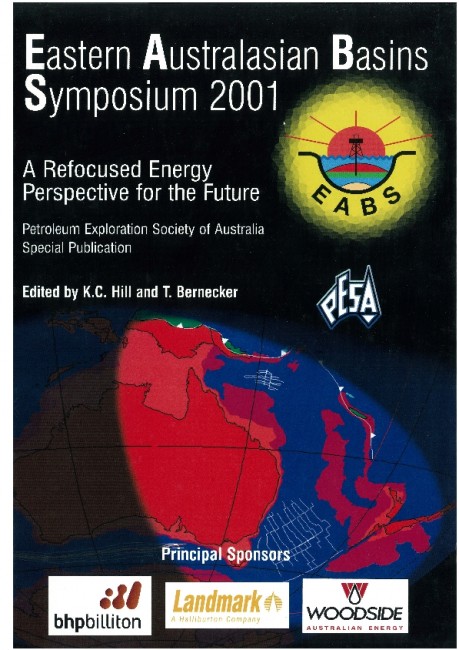Publication Name: Eastern Australian Basins Symposium 2001
Authors: R. Dragomirescu, J. Kaldi, N. Lemon and E. Alexander
Date Published: November 2001
Number of Pages: 33
Reference Type: Magazine Article
Abstract:
The seal potential of four lithofacies from the Early - Middle Triassic Nappameni Group and Late Triassic Cuddapan Formation, Cooper Basin is evaluated. Historically, the Nappameni Group has been regarded as a'regional seal' . This study is a detailed examination of its sealing properties. The Nappamerri Group consists of non-marine sediments deposited in a fluvial meandering environment which comprise both sealing and reservoir facies. The four sealing lithofacies identified in the study are:
I. diagenetically modified sandstones,
2. lacustrine silts and clays,
3. palaeosols, and
4. floodplain mudstones.
Seal potential is defined as seal capacity (column height able to be contained), seal geometry (thickness and lateral extent of the seal) and seal integrity. Seal capacity was evaluated by mercury injection capillary pressure analyses. Reservoir data from the Cooper Basin fields was used to calculate maximum hydrocarbon column height. The sensitivity of column height to variations in interfacial tension and wettability was tested. The greatest seal capacity, able to support an oil column height of I ,353 m or a gas column of 727 m is in lacustrine clays and silts. Palaeosols and floodplain mudstones can support an oil column of 1,132 mora gas column of 609 m. Diagenetically modified sandstones can support an oil column of 37 m or a gas column of 20 m. Sealing lithologies are recognised on wireline logs and were correlated and mapped across the Merrimelia Field in order to evaluate seal geometry. Seal integrity was addressed through literature analogs.
The best seal potential exists within palaeosols and floodplain mudstones. These lithofacies, grouped as two sealing intervals, are thick, extend over most of the Merrimelia Field and have high seal capacities. Although the lacustrine mudstones have a relatively higher seal capacity and are more homogeneous, they have a lower seal potential due to thinness and limited areal extent. The poorest seal potential occurs within the diagenetically modified sandstones. This lithofacies is thin, with unpredictable distribution, poor rock mechanical properties and the lowest seal capacity. This study emonstrates that the Nappamerri Group contains a variety of seal ing lithofacies with different seal potential; it can no longer be regarded as a simple regional seal but must be treated as a series of intraformational seals.


